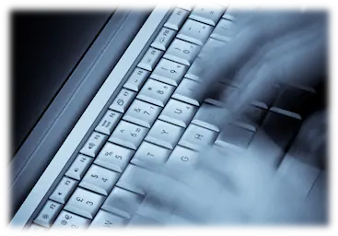
Email Templates Responding to Suspected Student Use of AI
In this post, we will explore three scenarios in which you may need to contact students by email to express concern about suspected inappropriate AI use in an assignment. The email templates below chart a scaffolded approach, moving from 1) an expression of concern regarding the suspected use of AI, to 2) informing the student you will be filing an academic offence after evidence of inappropriate AI use has been collected, to 3) deescalating when a student is anxious or alarmed in response.
Additional Resources
Feel free to adapt these templates to reflect your situation. These additional email templates address specific steps in implementing the Academic Integrity Procedure and conducting outreach to students. You may also find this post on Reacting and Responding to Student E-mails, Especially During End-of-Semester Stress helpful in crating emails to students.
A note as we get started
Since Conestoga provides students with access to Microsoft Copilot, it is imperative to communicate clear and consistent expectations about what AI technologies are permitted, for what purpose, and to what extent in assessments and learning tasks. If you are curious about creating and communicating parameters for acceptable AI use to students, check out the Generative AI Guidebook for Teaching & Learning at Conestoga, section 4.4 Explaining AI Use for Assignments, and this post on Generative Artificial Intelligence (GenAI) Assessment Statements for Students.
1) An expression of concern regarding the suspected use of genAI
The scenario: You have clearly communicated the parameters of acceptable AI use to students in your course, both verbally and in writing, on several occasions prior to the assessment submission date.
Now at week three, you are grading the first significant assignment and observe patterns in student work that cause suspicion that some students may have used AI to complete their work or used the technology in a way that was prohibited. You don’t have evidence that AI was used, but you want to reinforce expectations.
You send an email to the whole class:
Dear Students,
I want to remind you that the use of AI tools is strictly prohibited in completing assignments in this course/OR in completing [identify specific tasks in the assignment]/OR is permitted only to support the completion of [identify specific tasks in the assignment]. The use of AI-powered tools may seem tempting to some of you to obtain better grades or complete assessments quickly, but it is important to understand the implications of using such tools in unauthorized ways.
Firstly, the use of AI tools during assessments can undermine the learning process when they replace important aspects of cognition OR/AND skill development. It is essential that you develop critical thinking skills and apply the knowledge you have acquired through your coursework when completing assessments. Relying on AI tools may hinder your ability to develop these skills and lead to an incomplete understanding of the material.
Secondly, the use of AI tools can also lead to academic dishonesty. Cheating in any form is not acceptable in this course and can result in serious consequences, including failure of the assessment, the course, or even expulsion from Conestoga.
Finally, and as communicated in the Instructional Plan for our course, the use of AI tools during assessments to [complete learning tasks OR perform specific tasks as part of an assessment etc.] on your behalf is a violation of academic integrity, which is a fundamental value of our institution. It is important that you uphold these values and maintain the highest standards of academic honesty.
I encourage you to ask questions, seek help, and work hard to develop your skills throughout this course. I believe in your ability to succeed through hard work and dedication.
Sincerely,
[Your Name], Professor
2) The filing of an Academic Integrity Violation after evidence of inappropriate AI use has been collected
The scenario: A student has admitted to using AI to complete large portions of an assignment on their behalf. The student’s use contravenes the parameters of acceptable AI use that you have communicated to the class in several contexts and on multiple occasions. You asked the student to revise and resubmit their assignment and rectify the inappropriate use of AI in response to feedback you provided. The resubmitted assignment, however, shows the student has changed very little of the original problematic content. According to the Academic Integrity Procedure, you meet with the student to discuss. At this meeting, the student defends their use of AI.
After the meeting, you send an email to the student communicating that you will file an Academic Integrity Violation.
Dear [Student Name],
Thank you for meeting with me on [date] to discuss my concerns about your [identify assignment] in XXX [course code]. As I communicated in that meeting, I am concerned about the inappropriate use of artificial intelligence technologies I have observed in your assignment. During our conversation, you confirmed your use of AI to accomplish [identify relevant learning task(s)].
As your professor, it is my responsibility to ensure that my students achieve course learning outcomes under their own cognitive efforts without unauthorized aids or assistance, which undermine the integrity of learning. My expectations around AI use were communicated in the Instructional Plan, in the assignment instructions, and in class when I presented the assignment in Week [#] [list relevant places expectations were communicated to students]. Your [identify assignment] does not satisfactorily demonstrate your independent efforts in learning or follow the expectations I communicated around AI use in our course.
For these reasons, I will be filing an Academic Integrity Violation.
You can find more information on students’ responsibilities on Conestoga’s Academic Integrity website.
Sincerely,
[Your Name], Professor
3) Deescalating when a student is anxious or alarmed in response
The scenario: In response to the email in which you communicated that you are filing an Academic Integrity Violation, the student expresses alarm and pleads with you not to act because of the repercussions the violation will have. The student cites their precarious financial situation and life circumstances, asking you to be compassionate and forgive their use of AI in completing the assignment. You clarify your position and reasoning in an email.
Dear [Student Name],
I hear the concern in your email regarding my decision to file an Academic Integrity Violation for your [identify assignment] in XXX [course code]. It sounds like there are many pressures in your life at the moment.
My role as a professor at Conestoga is to support students as they achieve course learning outcomes. I have a responsibility to ensure students demonstrate learning under their own cognitive efforts, with honesty and integrity. Based on the evidence I collected and the conversations you and I have had, I have determined that your use of AI in [identify assignment] is inappropriate given the expectations of learning at Conestoga. I will be filing an Academic Integrity Violation.
I empathize with your difficult situation and encourage you to connect with Student Success Services for further support. I am here to support you in the upcoming evaluations in our course. I am happy to work with you as you prepare for subsequent assignments, so you understand expectations and feel confident in your work.
Sincerely,
[Your Name], Professor
Addressing Ongoing Concerns
For guidance on addressing students who persist in emailing, see this post on responding to student emails in high stress periods.
Reach out to Student Rights and Responsibilities for issues related to student conduct. If you have concerns about the student’s wellbeing, submit a CARE Team report right away.






